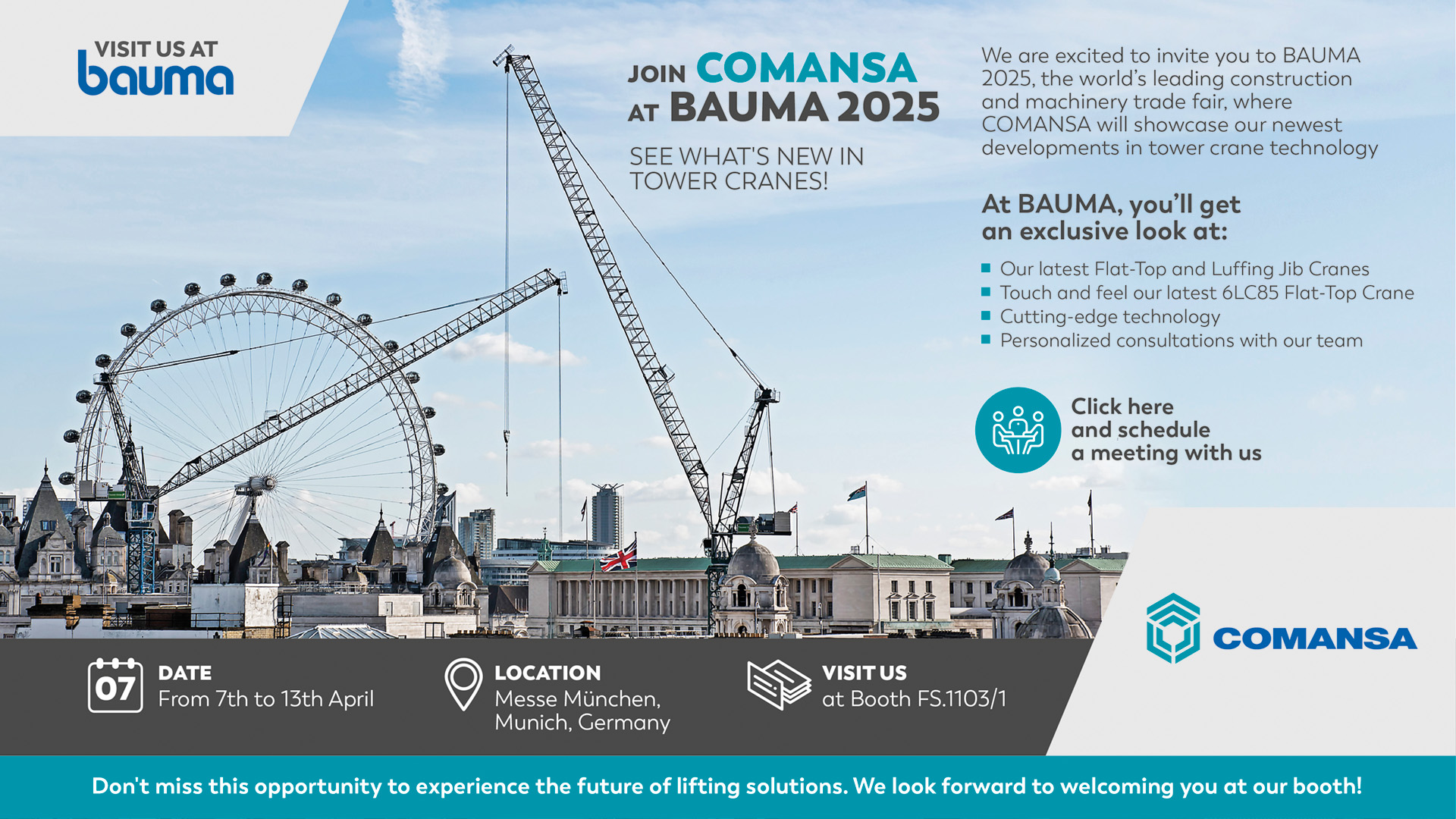Comansa at the Cranes Today Tower Crane Conference: PPVC
Comansa recently took part in the virtual conference on tower cranes organised by the specialist magazine Cranes Today. We were represented by our sales director, Eleazar Raya, who talked about tower cranes’ involvement in PPVC.
Eleazar Raya explained that large cities around the world must face up to similar challenges: their rapid growth has made the construction of numerous homes and infrastructure in a short period of time essential. In addition, environmental regulations are stricter and there is greater pressure to comply with more demanding manufacturing standards and control component traceability, all while keeping costs in check.
With the view to improving productivity in construction, a new concept emerged, named Design for Manufacturing and Assembly (DfMA), in which the design of the construction is conceived in such a way that the majority of the construction work is carried out somewhere other than the site in a controlled industrial production environment. One of the main technologies supporting DfMA, which aims to address these challenges, is prefabricated prefinished volumetric construction (PPVC).
Advantages of PPVC
As explained by Eleazar Raya at the Cranes Today Tower Crane Conference, PPVC improves productivity, provides greater budgetary and performance control, and reduces human resources expenditure. Furthermore, work is more environmentally friendly as it generates less waste and noise pollution.
Furthermore, the integration of PVCC with the 3D BIM models that we also offer here at Comansa ensures greater control and continuity in all construction processes.
“The work site is becoming a really smart workplace, with lots of information on the construction’s progress. And the crane is turning into the heart of the workplace.”
Requirements for tower cranes in PPVC
Lifting requirements in this type of construction are highly demanding, with loads that can reach up to 39 tonnes per PPVC module. This means suitable cranes must be selected based on the relationship between load capacity and distance, between 600 and 1000 tonnes. Additionally, tower cranes that offer different jib and counter-jib lengths adapt more easily to the site.
For example, to load PPVC modules of 25-39 t, Comansa 21LC750 50-tonne, 21LC1050 50-tonne and 21LC1400 66-tonne tower cranes can be used, in addition to the LCL700 50- or 64-tonne luffing-jib tower cranes.
Generally, only one is used, but two tower cranes are sometimes required to work simultaneously: one at the collection point for modules arriving via heavy transport, and the other at the point of placement. In these cases, Comansa’s Flat-Top design is a good solution, as it allows for improved overlapping and has greater resistance to fatigue when performing repetitive movements.
Future of PPVC and opportunities for rental companies
Eleazar Raya ended his presentation by considering the future. He explained that in PPVC, cranes are usually on site for less than a year, meaning rental may be an interesting option for construction companies. Consequently, new commercial opportunities may emerge for rental companies in several countries.
Lastly, he underlined the importance of being efficient in assembly, disassembly and use of the crane, as they are usually used for a shorter period of time, often less than a year. For example, if it takes two weeks to assemble it and another two weeks to disassemble it, almost 10% of the rental period is lost.
Although the conference was mainly based on the peculiarities of the Asian market where this form of construction is more widespread, it is expected that PPVC will be employed more in Europe and North America in the future, although the modules used may be smaller, owing to transport limits and associated costs.
Here’s the full video of the presentation:
It was a pleasure to share Comansa’s experience and knowledge at one of the industry’s leading events, even though it was a virtual event this year.


